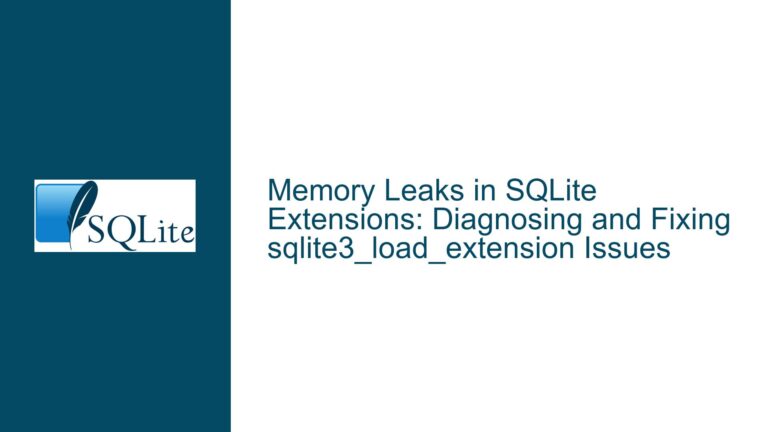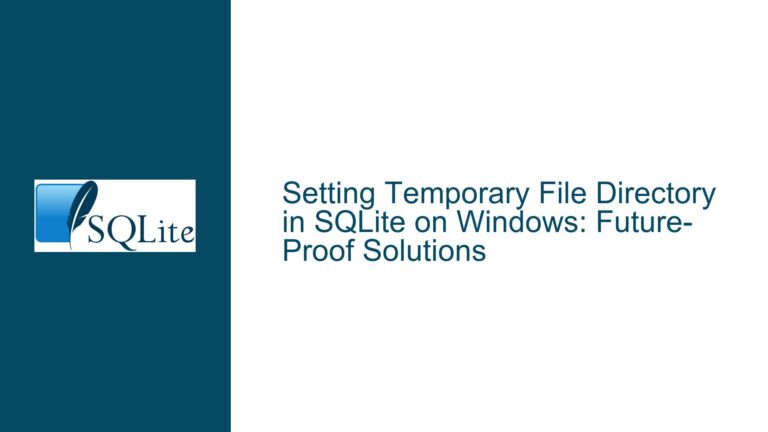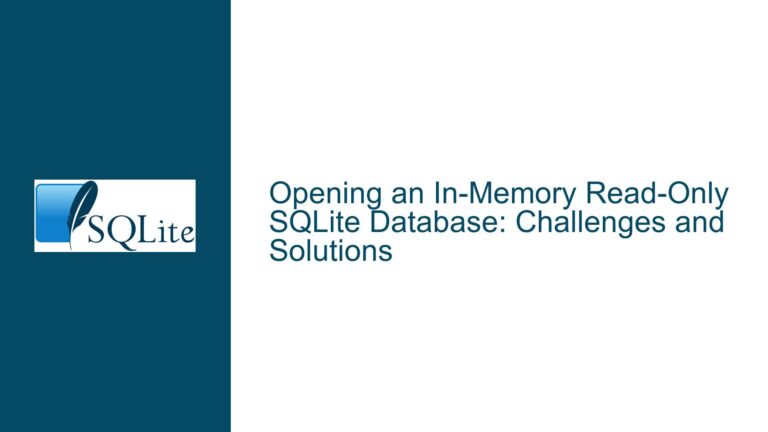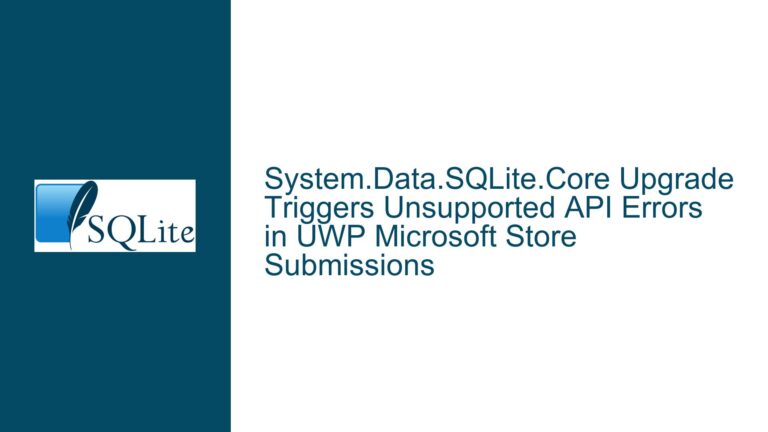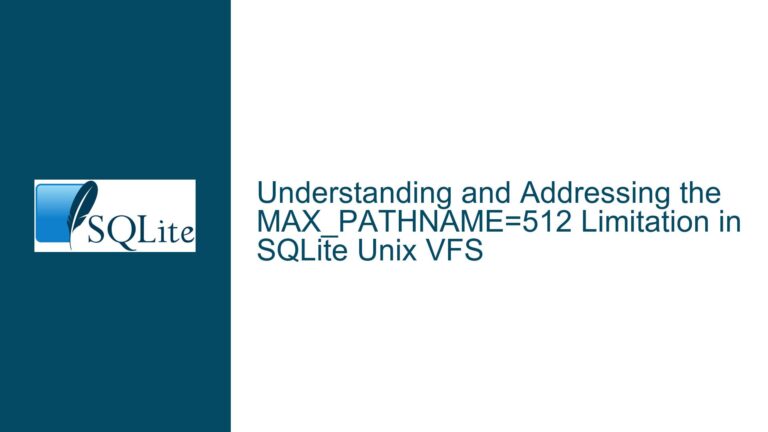Request for Destructor Function Pointer in sqlite3_index_info.idxStr
Issue Overview: The Need for Custom Memory Management in sqlite3_index_info.idxStr
The core issue revolves around the sqlite3_index_info structure in SQLite, specifically the idxStr field and its associated needToFreeIdxStr flag. The idxStr field is used to pass custom information from the xBestIndex method to the xFilter method in virtual table implementations. This information is often critical for interpreting the arguments passed to xFilter, which is called frequently during query execution, such as in JOIN operations. The current implementation relies on SQLite’s default memory management, where sqlite3_free is used to deallocate the memory pointed to by idxStr when needToFreeIdxStr is set. However, this approach is insufficient for scenarios where the memory management of idxStr requires more sophisticated handling, such as when the memory region contains complex data structures or when additional resources (e.g., handles, file descriptors) need to be freed upon deallocation.
The problem is exacerbated by the fact that xFilter is called repeatedly during query execution, making it imperative that the information passed via idxStr is both quickly accessible and correctly managed. The current design does not provide a mechanism for custom destructors, which would allow developers to specify how the memory pointed to by idxStr should be freed. This limitation forces developers to either manage memory manually, which can be error-prone, or to accept the constraints imposed by SQLite’s default memory management, which may not be suitable for all use cases.
Possible Causes: Constraints and Limitations in Current Memory Management
The primary cause of this issue lies in the design of the sqlite3_index_info structure, which does not include a mechanism for specifying a custom destructor for the idxStr field. This design choice was likely made to keep the API simple and to avoid complicating the memory management model. However, as virtual table implementations have become more complex, the limitations of this approach have become apparent.
One of the key constraints is that idxStr is expected to be a valid text string, terminated by a NUL character. While this works well for simple use cases, it becomes problematic when the information passed via idxStr is more complex. For example, if idxStr points to a memory region that contains multiple data structures or requires additional cleanup (e.g., closing file handles, releasing locks), the current design does not provide a way to ensure that these resources are properly managed.
Another limitation is that the needToFreeIdxStr flag only triggers the use of sqlite3_free to deallocate the memory. This is insufficient for scenarios where the memory management requires more sophisticated handling. For instance, if idxStr points to a memory region that was allocated using a custom allocator, or if it contains pointers to other memory regions that also need to be freed, the current design does not provide a way to specify a custom destructor that can handle these cases.
Troubleshooting Steps, Solutions & Fixes: Implementing Custom Destructors for sqlite3_index_info.idxStr
To address this issue, a new field could be added to the sqlite3_index_info structure, such as idxStrDestructor, which would be a function pointer to a custom destructor. This destructor would be called instead of sqlite3_free when needToFreeIdxStr is set, allowing developers to specify how the memory pointed to by idxStr should be freed. This approach would provide the flexibility needed to manage complex memory regions and additional resources, while still maintaining the simplicity of the existing API.
The implementation of this solution would involve the following steps:
Extend the
sqlite3_index_infoStructure: Add a new field,idxStrDestructor, to thesqlite3_index_infostructure. This field would be a function pointer that takes a single argument, a pointer to the memory region to be freed. The function would be responsible for deallocating the memory and performing any additional cleanup required.Modify the
xBestIndexMethod: Update thexBestIndexmethod to allow developers to specify a custom destructor foridxStr. This could be done by setting theidxStrDestructorfield to the appropriate function pointer. If no custom destructor is specified, the default behavior (usingsqlite3_free) would be retained.Update the
xFilterMethod: Modify thexFiltermethod to call the custom destructor (if specified) whenneedToFreeIdxStris set. This would ensure that the memory pointed to byidxStris freed correctly, and any additional resources are properly cleaned up.Document the New Feature: Update the SQLite documentation to include information about the new
idxStrDestructorfield and how to use it. This would help developers understand the new feature and how it can be used to manage complex memory regions and additional resources.Test the Implementation: Thoroughly test the new feature to ensure that it works as expected and does not introduce any new issues. This would involve testing various scenarios, including cases where
idxStrpoints to complex data structures, where additional resources need to be freed, and where no custom destructor is specified.
By implementing these changes, SQLite would provide developers with the flexibility needed to manage complex memory regions and additional resources in virtual table implementations. This would address the limitations of the current design and allow for more sophisticated memory management in scenarios where it is needed.
In conclusion, the addition of a custom destructor function pointer to the sqlite3_index_info structure would provide a robust solution to the issue of managing complex memory regions and additional resources in virtual table implementations. This change would enhance the flexibility and power of SQLite’s virtual table API, making it more suitable for a wider range of use cases.

